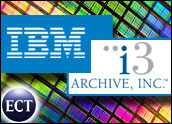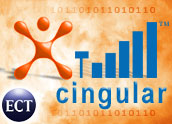
A new architecture that uses micro-threading in DRAM cores may result in four-times faster performance for gaming applications, among other uses.
The development, announced today by Rambus, a technology licensing company that specializes in high-speed chip interfaces, will increase memory subsystem efficiency in 3D graphics, advanced video imaging and network routing and switching.
Micro-threading chops data into tiny bits that can be processed more efficiently without draining power. The bits of information can be processed simultaneously. The increased memory efficiency allows for richer graphics rendering.
Unique Solution
While multi-core processors are becoming the norm, this is a first for DRAM (dynamic random access memory). “It is a unique breakthrough since there is no DRAM product which allows access to several banks at the same time,” Nam Kim, director and principal analyst, Memory ICs/Storage Systems at iSuppli, told TechNewsWorld. “This is more than existing data interleaving solutions.”
Data interleaving is a method of arranging data to increase performance.
Rambus said micro-threading eliminates the waste of bandwidth that occurs in a single-core operation.
“A typical mainstream DRAM provides a larger amount of data than needed by many applications. As a result, large amounts of memory bandwidth are used to deliver a small amount of relevant data,” the company said in a press release. Micro-threading provides only the data needed, and in smaller bits.
PCs Don’t Need It
While the technology is an advance, it is not expected to find widespread use.
“It is a good fit with some network and consumer applications which require higher graphic performance,” said Kim. “However, normal PCs don’t require this technology. Micro-threading will be mainly used in the consumer and wired-network industries.”
Rambus quantified the speed difference in its own analysis of 3D applications. It found that standard GDDR SDRAM can deliver between 50 and 125 million triangles per second; GDDR SDRAM enhanced with micro-threading can deliver between 100 and 500 million triangles per second.
DRAM controllers connected to the micro-threaded DRAMs will only be able to perform at the faster speeds if they are optimized to do so, Rambus said.





















































